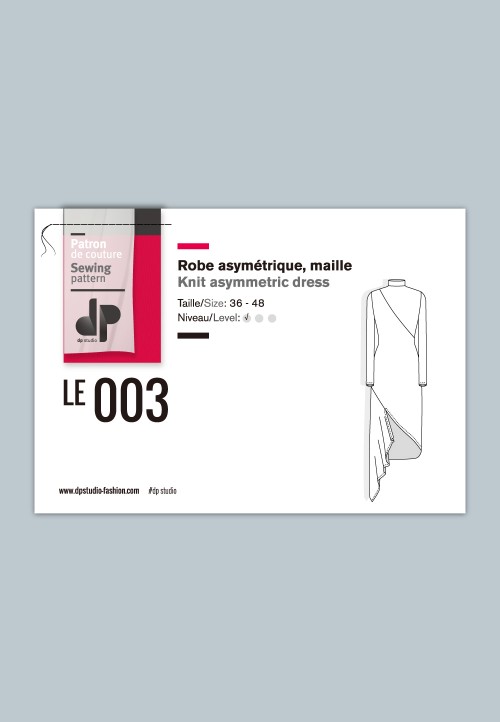This make was inspired by fellow blogger Shauni, who blogs over at A Magnificent Thread, when I saw her version of this awesome asymmetric knit dress by DP studio. I'd never heard of this pattern company before but looked them up after seeing Shauni's post.
 |
| Shauni's version |
The pattern comes in an A4 sized box and is printed on thick sturdy paper. At first, I thought there were lots of pattern pieces but discovered that there are only 8, but they are BIG! as all pieces are cut from a single layer of fabric.
I bought some tissue paper and traced my size. Based on my measurements I cut a 40 for the top, grading to a 42 at the hip. The drafting on this pattern is excellent. I could take in the waist a little bit, but it's not overly big. What I am really impressed with, is the drafting at the shoulders and arms. A lot of patterns I have made recently have been way too narrow at the shoulder, and the armsyce has been really small (Gertie patterns). This was a pleasant change and I made no adjustments to these areas at all. the dress is a very comfy fit and I may use this as a baseline for all other knit patterns.
The dress came together easily and is suitable for a confident beginner to sew. An overlocker really does help and it would have been a super quick make, but I ended up using the overlock stitch on my regular Janome machine as my overlocker was playing up badly and I spent an age trying to get it to work. It really needs to go and be serviced. I also used the twin needle for hem and sleeve finishes - a first for me!
I found the fit great and had lots of compliments when I wore it today. I do think the split is a little high and I will probably add to the length at the hip to make this a bit more modest, The model version on the website seems to be much longer.
This would be a really stunning dress in a sparkly knit or scuba fabric. It would also work well in a Ponte de Roma fabric (and probably show fewer lumps and bumps). I can see this being a staple of my winter wardrobe and I might even use the top part of the pattern to make a couple of tops to wear with jeans or under my pinafore dress.






















































